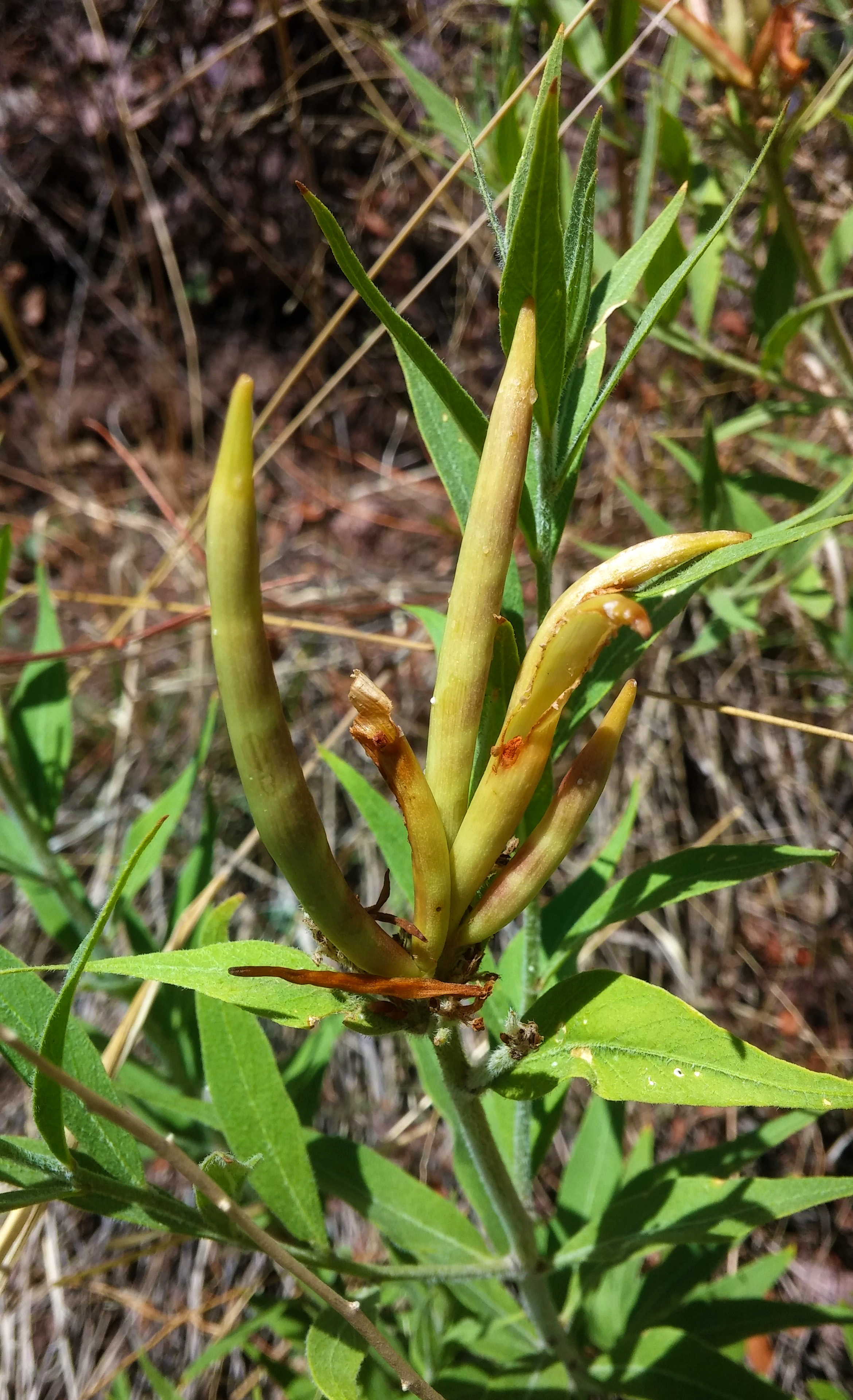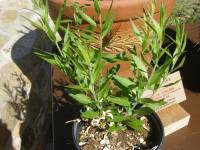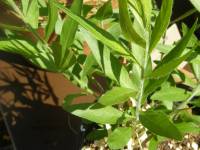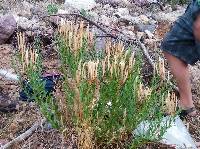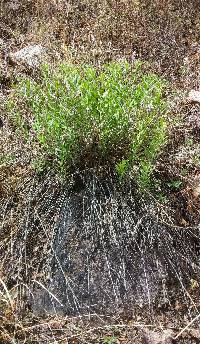
|
|
|
|
Family: Apocynaceae
Kearney's Bluestar, more...Kearney bluestar, Kearney's blue-star
|
Plant: perennial herb; 4-9 dm tall, pilose Leaves: lanceolate to linear-lanceolate, the lower ones 6-10 cm long, 11-17 mm broad, the upper ones 4-6 cm long, 3-8 mm broad INFLORESCENCE: a terminal, compound cyme Flowers: calyx lobes subulate, 3-6 mm long; corolla tube 12-15 mm long, broadest below the apex, slightly constricted at the orifice, the lobes 2-4 mm long Fruit: slightly constricted between the seeds, 3-10 cm long. SEEDS cylindrical, corky, 8-11 mm long, 3-4 mm broad Misc: 1100 m (3600 ft) REFERENCES: McLaughlin, Steven, P. 1994. Apocynaceae. J. Ariz. - Nev. Acad. Sci. Volume 27, 164-168. McLaughlin 1993, AZ Rare Plant Field Guide 2001, Kearney and Peebles 1969, McDougall 1973, USFWS 2011 Duration: Perennial Nativity: Native Lifeform: Forb/Herb General: Herbaceous multi-stemmed perennials, 40-90 cm tall, with pilose herbage; stems leafy, erect, numerous, sparingly branched, from a thickened woody root. Leaves: Alternate, sessile to short petiolate, lanceolate to linear-lanceolate; lower blades 6-10 cm long, 11-17 mm wide, upper blades 4-6 cm long, 3-8 mm wide; upper surfaces of blades glabrous, margins and veins on the lower surface of the blades pilose, margins entire; petioles pilose. Flowers: Light blue to purple or white, in terminal compound cymes; corollas slaverform with 5 lobes, the tubes 12-15 mm long, broadest below the apex and slightly constricted at the orifice, hairy within; corolla lobes narrow, acuminate, 2-4 mm long; calyx lobes subulate, 3-6 mm long; stamens included, inserted on the corolla throat; styles slender. Fruits: Follicles (capsules which split open along a single line of dehiscence) slightly constricted between the seeds, erect, 3-10 cm long. Seeds cylindrical, corky, numerous, 8-11 mm long, 3-4 mm broad. Ecology: Found in stable, partially shaded, coarse alluvium along a dry wash from 3,600-3,800 ft (1097-1158 m); flowering April-May. Distribution: Known only from the Baboquivari Mountains in Pima County, AZ. Potentially present in suitable habitats nearby. Notes: Noted to occur only in Pima county, Arizona. This species is protected under the Endangered Species Act (Listed Endangered without critical habitat) and by the Arizona Native Plant Law. Like many species in the dogbane family, A. kearneyana has milky toxic sap and appears not to be grazed even in drought times and when surrounding vegetation is grazed. Ethnobotany: Unknown, but other species in the genus have uses. Etymology: Amsonia is named for Charles Amson, American physician who lived in Virginia in 1760 and was a friend of prominent physician, botanist and plant collector John Clayton; kearneyana is an honorific for Thomas H. Kearney (1874-1956), the American botanist and agonomist well known for his work on the Arizona flora. Synonyms: None Editor: LCrumbacher2012, AHazelton 2015 |
This project was made possible in part by the Institute of Museum and Library Services [MG-70-19-0057-19].
Powered by Symbiota

